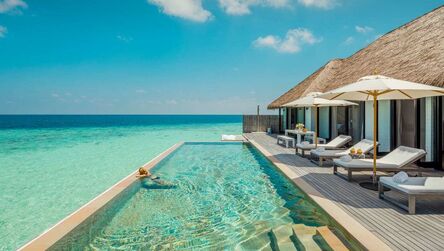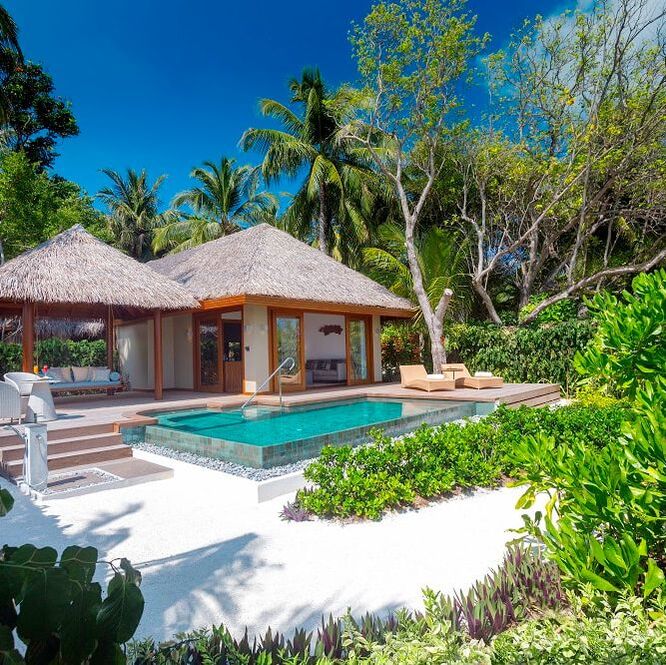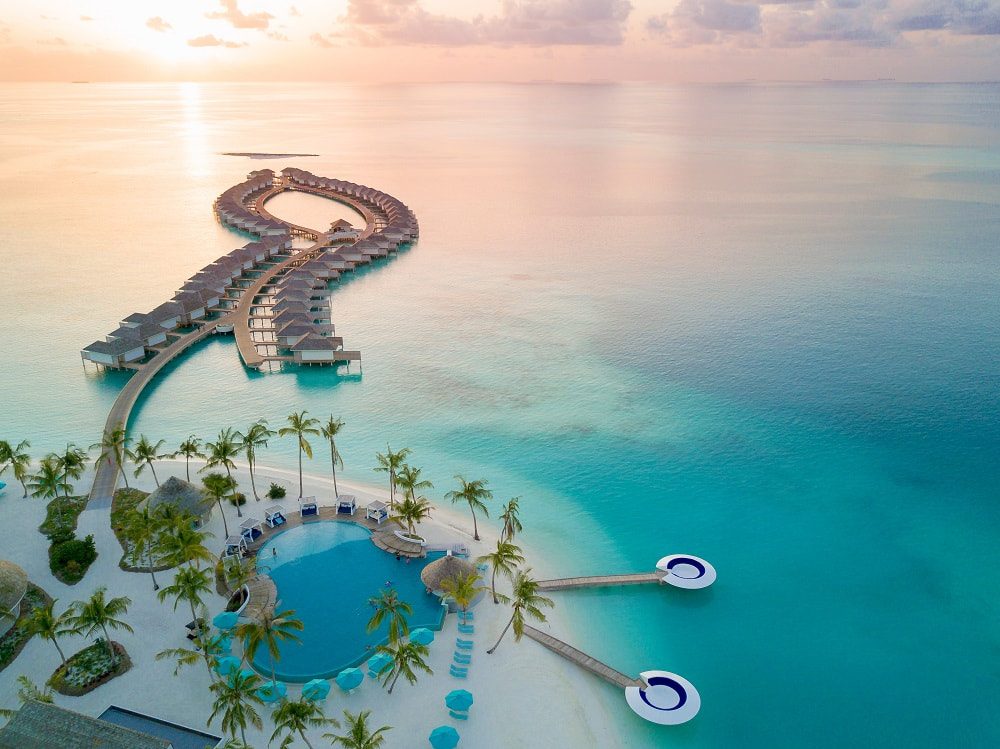MALDIVES
The Maldives is a tiny nation of over 1000 islands spread across the equator in the Indian Ocean, south west of Sri Lanka. The Maldives instantly conjures up images of dreamy wallpapers, with its white sandy beaches, azure waters and palm trees framing it all.
On many people's bucket lists is probably a chance to stay in a hotel which seems to be its own private island, with the rooms built on stilts in the shallow sea water, where one can simply dive off one's balcony into the warm water. The Maldives is where you will find those hotels and resorts. This is where the largest hotel brands try to outdo each other with luxury extras that you didn't know you needed, such as private plunge pools, pillow menus and personal butlers.
On the flip side, it is also possible to find family-friendly resorts with activities for the family and eco-friendly resorts for those looking to get off the grid and leave minimal impact on their travels. If you are looking for a warm, relaxing, tropical, and, above all, secluded beach escape, this is the place to recharge your batteries and refresh your senses.
How to get there
The international airport is located on Hulhulé island, adjacent to the capital island of Malé. From here, you can board a boat or a seaplane to your island resort, depending how far away it is located.
Activities
Each resort offers a number of water-based activities, such as kayaking, windsurfing, paddle boarding, kite-surfing and jet-skiing. The Maldives has excellent acquatic life due to the many coral reefs surrounding the islands. Most resorts have one two decent local dive sites and snorkel areas and the ones close to Baa offer trips to the UNESCO biosphere reserve at Hanifaru Bay, famed for its massive manta aggregations.
Geography and environment
The Maldives has one of the most delicate environments anywhere on the planet and the country's well-being depends heavily on the health of its coral reefs, which offer protection from the seas and also provide a source of income through fishing and tourism.
Several conservation efforts are underway to protect this valuable marine environment, both by the government and by individual resorts. While some programs conducted by resorts focus on the protection and rehabilitation of sea turtles, others are engaged in cutting edge research on regeneration of coral reefs. Several community education programs are also conducted by resorts for school children and the community at large. Non-governmental organizations also play an important role too through regular beach and reef clean up programs.
On many people's bucket lists is probably a chance to stay in a hotel which seems to be its own private island, with the rooms built on stilts in the shallow sea water, where one can simply dive off one's balcony into the warm water. The Maldives is where you will find those hotels and resorts. This is where the largest hotel brands try to outdo each other with luxury extras that you didn't know you needed, such as private plunge pools, pillow menus and personal butlers.
On the flip side, it is also possible to find family-friendly resorts with activities for the family and eco-friendly resorts for those looking to get off the grid and leave minimal impact on their travels. If you are looking for a warm, relaxing, tropical, and, above all, secluded beach escape, this is the place to recharge your batteries and refresh your senses.
How to get there
The international airport is located on Hulhulé island, adjacent to the capital island of Malé. From here, you can board a boat or a seaplane to your island resort, depending how far away it is located.
Activities
Each resort offers a number of water-based activities, such as kayaking, windsurfing, paddle boarding, kite-surfing and jet-skiing. The Maldives has excellent acquatic life due to the many coral reefs surrounding the islands. Most resorts have one two decent local dive sites and snorkel areas and the ones close to Baa offer trips to the UNESCO biosphere reserve at Hanifaru Bay, famed for its massive manta aggregations.
Geography and environment
The Maldives has one of the most delicate environments anywhere on the planet and the country's well-being depends heavily on the health of its coral reefs, which offer protection from the seas and also provide a source of income through fishing and tourism.
Several conservation efforts are underway to protect this valuable marine environment, both by the government and by individual resorts. While some programs conducted by resorts focus on the protection and rehabilitation of sea turtles, others are engaged in cutting edge research on regeneration of coral reefs. Several community education programs are also conducted by resorts for school children and the community at large. Non-governmental organizations also play an important role too through regular beach and reef clean up programs.
where to stay...
In our attempts to make it as easy as possible for you to choose the ultimate dreamy hotel for what is sometimes a once in a lifetime island getaway, we have divided our favourite resorts into low-key, classic and deluxe. You can view pictures of them below. Open, close and open each tab again to view the images fully. If you have any questions about where to stay, don't hesitate to contact us.
Low-KeyKudafushi
Kandima
Reethi Faru
OBLU by sangeli
atmosphere kanifushi
mercure maldives kooddoo
ClassicBaros
constance moofushi
emerald
finolhu
pullman maamutaa
ozen BY ATMOSPHERE
DeluxeMILAIDHOO
fairmont sirru Fen fushi
six senses laamu
maalifushi by como
Nautilus
|
Maldives itineraries
Please click on one of the below links to view our Maldives itineraries or contact us directly for a bespoke itinerary.






